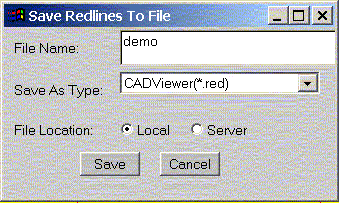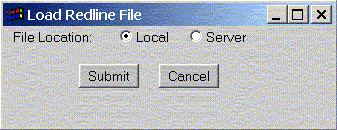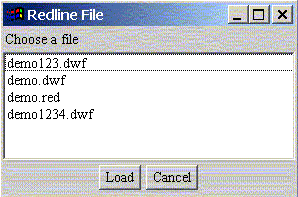Installing CADViewer
on a Microsoft Windows server
This page covers the setup of a Web server and the installation of CADViewer, for use in publishing drawings for collaborative viewing and comment. If you have already set up a functioning Web server (with either Perl or a script function), you need only install CADViewer, at which time you can start publishing.
| SYSTEM REQUIREMENTS — |
| CADViewer |
470 MB hard drive capacity |
| Apache Web Server |
Version 1.3 or later
12 MB free disk space (for installation)
3 MB space for final installation |
| Perl |
Apache Web Server |
RETURN to top of page
Installing Apache Web Server and Perl
| WARNING! |
The following instructions on how to install a Windows Web server are primitive. System administrators are responsible for making the Windows Web Server works |
If you have not already installed and set up a Web server (or network server) for use with CADViewer, you can do so by downloading and installing Apache Web Server and the accompanying Perl installer -- as described in this section. The installation of Apache and this version of Perl are as painlessly simple as can be.
If, however, you have already set up a functioning Web server, you can skip the following and proceed to the installation and configuration of CADViewer.
Contrary to normal expectations, this installer archive combines Perl and Apache software, with the emphasis on Perl. Instead of Perl depending upon Apache, it is the reverse. As a result, extraction and installation of the Perl application (from this archive) also results in a full installation of Apache Web server. For some unexplained reason, this "Perl" archive includes a full Apache software installation. You can install Perl (into the Apache directory as detailed here) and simply forget the Apache software if you do not need it.
- Download the Perl for Microsoft Windows Zip archive from LINK.
| ALERT! |
If you use an FTP application to download the installer, be sure to choose Binary mode. |
- Open the Zip archive and extract the contents into this directory:
(This directory will store both Apache Web server and Perl.)
- Quit your Zip utility and open the newly-created directory.
- Locate and start setup.bat.
A terminal window appears, and displays a short list of status messages as the setup proceeds.
This application needs less than a minute to complete the installation of Perl, which records the Perl directory in the Windows file structure and places shortcuts to the "Perl Console" in the Windows Start menu. (The Perl start menu also lists commands that allow you to start or stop Apache server as needed.)
- When installation is complete, you should test your Apache installation — as detailed in the next section.
RETURN to top of page
Testing the Apache Web Server
- Start a Web browser.
- Click in the Location field and type one of the following two URLs --
| http://[host]/ -OR- 127.0.0.1 (for local host) |
in which "[host]" should be replaced with the IP address of this Apache server.
If the Web Server was installed successfully, an Apache test page will appear in your browser.
- When installation is complete, you can proceed to installation of CADViewer — as detailed in the next section.
RETURN to top of page
Installing CADViewer
- Download the CADViewer Zip archive from LINK.
- Open the Zip archive file and extract the contents into this directory:
This directory serves as the default document root for Apache Web Server.
The extraction process will automatically create a new "CADViewerPRO" directory and copy all the CADViewer files into this directory.
- When this process is complete, quit the Zip utility. You can now configure CADViewer for basic use, focussing especially on activating the "redline" markup features.
RETURN to top of page
Configuring CADViewer
- Create a new directory in the main "CADViewerPRO" directory, entitled "redlines".
| ALERT! |
You can create this directory in any other location—including another networked server. You must, however, note down the exact directory pathway including the IP address of that machine, so that you can configure CADViewer to locate and use this directory. |
- Start any text editor and open the file "demo.html" — located inside the "CADViewerPRO" directory.
- Between the "<APPLET>" tags, enter the following parameters — on separate lines:
| <param name="redline_cgi" value="/cgi-bin/redsaver.pl">
<param name="redline_file" value="/CADViewerPRO/redlines/"> |
- Save these changes and close this file.
- Open the "CADViewerPRO" directory and locate this file:
| NOTE: |
These files contain the same information, but work with different processes. |
- If you installed Perl on your server, copy the file "redsaver.pl" into this directory:
- If you have already configured your server to utilize another cgi-bin, copy the "redsaver.cgi" file into that directory—if other than "c:\apache\cgi-bin".
- Start a text editor and open the newly copied "redsaver" script in its new home directory.
- Insert a blank first line and type the following text:
- Use the Terminal application's Search feature to find the text string "CHANGE ME".
- Delete CHANGE ME and replace it with the pathway to the CADViewer redline directory—making sure that quote-marks wrap the pathway text. The entry should resemble (with some variations) this example:
| "c:\\apache\\htdocs\\CADViewerPRO\\redlines\\" |
| ALERT! |
Make sure that you type double back-slash characters between items. |
- Save your changes and close this file.
- Using your text editor, locate and open the file "httpd.conf" (which should be in c:\apache\conf\.)
- Search for this code—
ScriptAlias /cgi-bin/ "c:/apache/cgi-bin/"
<directory "c:/apache/cgi-bin">
AllowOverride None
Options None
</directory> |
- Change this entry — Options None — to the following:
- Save the changes and close this file.
This completes the installation and basic configuration of CADViewer.
RETURN to top of page
Testing your new CADViewer configuration
This section is only for Apache installations. All others can skip this procedure.
- Make sure that Apache Web Server, if active, has been shut down and restarted. (You can use the Start | Programs | Perl menu commands for these steps.)
- Using a Web browser on a separate machine, connect to the CADViewer host server. The URL should somewhat resemble either of these examples:
http://[HOST IP]/cadviewerpro/demo.htmln -OR- 127.0.0.1 (for local host)
If the connection is successful and the server was properly set up, you should see a Web page with a CADViewer window in the center — displaying a mock architectural drawing on a black background.
- Repeat this test with as many different browsers (and browser versions) from as many different computers and operating systems as you can.
RETURN to top of page
Verify that the Host information is correct
When you purchase a license for CADViewer use, the viewer will have been configured to run only on the web server URL you specified when you purchased the viewer. To make sure that the configuration is correct, follow these steps:
- Try using the viewer by connecting to the demo page on the current server — as described in the previous section.
If you installed the CADViewer on the wrong host, a warning window will pop up and the viewer will not appear in the browser window.
Some browsers will not display the warning window while displaying the viewer. Do not assume that the viewer was installed and configured correctly because it appears in this one browser. To verify that the viewer was installed correctly, follow these steps:
- Use a Java-capable Web browser (on a different computer) to reopen "demo.html".
- Open that browser's Java console by doing the following:
| Netscape Communicator 4x and later: |
Choose "Communicator | Tools | Java console". |
| Internet Explorer 4.x and later: |
Choose "View | Java Console". |
The Java console, after opening, should display the status message, "Host verified", and will also display the host name. This verifies that the viewer was configured correctly.
| ALERT! |
If the viewer does not say "Host verified" or a warning window appears, yet the CADViewer application is running on the Web server it was licensed for, please contact Tailor Made Software Ltd. Support (via e-mail) for a new version. |
RETURN to top of page
Testing the redline features
At this time, you should test the CADViewer "redline" features, as described in the following steps:
| NOTE: |
If this procedure does not work, you can test the cgi script that enables redline file saving by following the procedure detailed in LINK. |
- Click in any of the Redline tools (shown below) and create a markup anywhere on the drawing.

- Click the disk icon (shown below) in the Redline toolbar.
 A Save Current Redlines dialog box appears, as shown below.
A Save Current Redlines dialog box appears, as shown below.

- Click Server (if it has not already been selected.)
- Change the name of the redline file if you don't want the default name and the type of redline file to save.
- Click Save.
If the dialog box closes and no error window appears, your redline file was saved in the redline directory.
- To verify that the file exists, click the Open button in the Redline toolbar — as shown below.
 The "Load Redlines for this drawing" dialog box appears, as shown below.
The "Load Redlines for this drawing" dialog box appears, as shown below.

- To view a list of the names of any redline files, click Server.
- A "Redline File" dialog box appears, listing this "demo" redline filename.

- To view the redlines for this drawing, select the file name and click Load.
- Click Cancel to close this dialog box without opening a redline file.
This concludes all of your preliminary tests. Your CADViewer server is ready for use.
RETURN to top of page
Uninstalling CADViewer
To uninstall CADViewer from your Web servers, follow these steps:
Delete the CADViewer installation directory and its subdirectories.
RETURN to top of page

 A Save Current Redlines dialog box appears, as shown below.
A Save Current Redlines dialog box appears, as shown below.

 The "Load Redlines for this drawing" dialog box appears, as shown below.
The "Load Redlines for this drawing" dialog box appears, as shown below.



 A Save Current Redlines dialog box appears, as shown below.
A Save Current Redlines dialog box appears, as shown below.

 The "Load Redlines for this drawing" dialog box appears, as shown below.
The "Load Redlines for this drawing" dialog box appears, as shown below.

